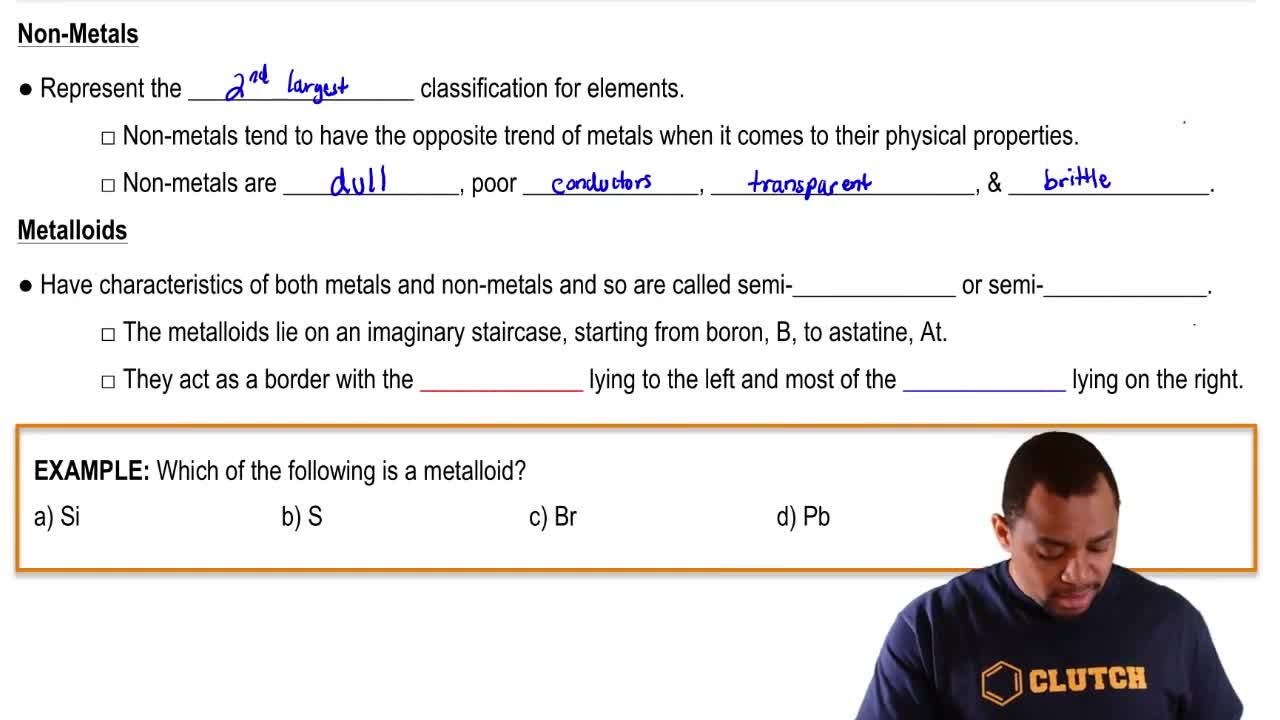Here are the essential concepts you must grasp in order to answer the question correctly.
Cations and Anions
Cations are positively charged ions formed when an atom loses one or more electrons, typically associated with metals. Anions are negatively charged ions formed when an atom gains electrons, usually linked to nonmetals. Understanding the behavior of these ions is crucial for grasping the nature of ionic compounds and the periodic trends in element reactivity.
Recommended video:
Metals, Nonmetals, and Metalloids
Elements are categorized into metals, nonmetals, and metalloids based on their physical and chemical properties. Metals are generally good conductors of heat and electricity, while nonmetals are poor conductors and often form anions. Metalloids exhibit properties of both metals and nonmetals, which can lead to confusion regarding their ability to form ions.
Recommended video:
Ion Formation and Element Classification
Not all elements form ions; some, particularly noble gases, are stable and do not readily gain or lose electrons. The statement in the question implies a direct correlation between element classification and ion formation, which is not universally applicable. Understanding the exceptions and the nature of each element's electron configuration is essential for accurate classification.
Recommended video:

 Verified step by step guidance
Verified step by step guidance


